Escape From Tokyo By Car - A Look Back
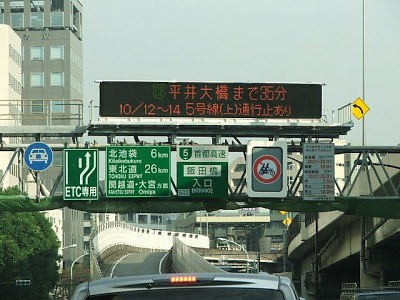 |
Bill's Look Back: Two things occurred in 1985 for me that relate to the following piece, “Escape from Tokyo,” which is about driving in Japan. It was then understood that nobody from America should or would contemplate simply driving around Japan, and even today, “everyone knows,” you just get on trains and go places when you tour Japan.
Anyway, the two things were that I got a letter from Mileage Plus at United airlines, telling me that for 60,000 miles, I could fly to Tokyo and back in First Class, as United had just taken over the Pan Am routes and planes. It took me all of four minutes to agree to that.
Second, I started writing for what was then a brand new automotive magazine, Automobile Magazine, started in that year by David E. Davis, Jr. The piece that follows was in fact the first one I published in Automobile. As David said, the magazine should be devoted to “life, living, and automobiles.”
I hope you find it, as I did re-reading it, just as relevant and fun
as I did when I wrote it...enjoy.
Bill
Escape from Tokyo
By Bill Sharfman
Tokyo 1985; I have been traveling on business, to great destinations, yes--my friends and acquaintances have been envious of my travel to England, the Continent, even Florida, but it is a succession of planes and taxis and meetings, meetings, taxis, and planes. To go driving in a new, exotic place...now that would put the romance back into travel. I had forgotten--and now, leaving Tokyo, I suddenly remember--what a pure pleasure it is to get into an automobile to go exploring. But perhaps I am getting ahead of my story. . . .
I am here to settle the question once and for all of what it's really like to go driving in Japan.
"I don't get it," your Tokyo automotive journalist-acquaintance is saying, "I keep getting asked what it's really like to drive in Japan--you put the key in and turn it, put the car in gear, and go. Surely it's as simple as that?" Well, not quite.
"Honda rang to say they're putting an Accord Aerodeck at your disposal," he goes on, "and by they way, they asked about your license." So on my first full day in Tokyo, I found myself setting out on a quest for Japanese officialdom. Some romance.
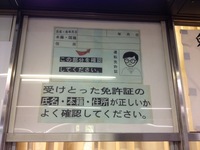 |
Another twenty dollar taxi ride to Samezu, where a three-story building is devoted to licensing hordes of Japanese teen-agers. Samezu reminds you more than ever of a treasure hunt; it is a crazy maze of numbered stations, windows, and rooms, all of which you trot back and forth to, bobbing and smiling. You are, of course, the only gaijin within miles, but inexplicably there is a very elderly Harley Duo-Glide with sidecar on display on the second floor.
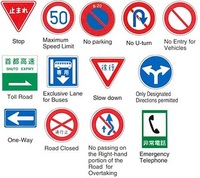 |
The next day, you go to the Honda building to collect the car. In the main floor showroom, you are captivated by a display of Honda racing hardware. Displayed here is one of Mike Hailwood's bikes, still more beautiful and serious looking than any of today's gaudy racers, never mind how it handled, and there is the RA300 car you saw John Surtees drive at Watkins Glen in 1967.
On the reception floor, you are ceremoniously met by a Honda representative, and as you take green tea, you proudly produce your new Japanese license; but the man from Honda is aghast that you don't have a proper business card to offer. After much disconcerted shuffling of documents, you get the car.
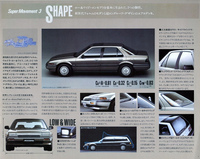 |
After staggering off a twelve-hour airplane flight to a place where almost nothing is in English, it's days before you get around to noticing that they drive on the left side. Left side driving, especially with an automatic transmission, is scarcely an issue. What is an issue is a slight tendency some have to wander on the roads and through corners. The Japanese seem insufficiently competitive to be entirely predictable, at least when it comes to driving.
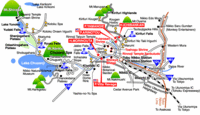 |
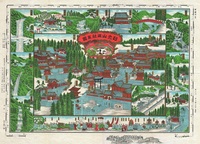 |
Traversing the tangled sprawl of Tokyo, you feel you have lucked out--the weather couldn't be better, the fabled Tokyo traffic hasn't materialized, and you don't seem to be getting lost. Soon you find route 4 heading northeast, and wait for the countryside to begin, but Tokyo is persistent. After a time, the interest of the exotic wears thin, as the road congestion mounts, and soon route 4 looks like "the strip" anywhere, but with funny writing. You tack over to the Tohoku Expressway, the northeast toll road, and soon you are really motoring.
The toll road is excellent--three wide lanes, nice flat road in superb condition, and open views of the Japanese countryside, which includes an astonishing variety of trees and mountains, human habitations, and the omnipresent rice paddies. The Aerodeck, with its 2 liter engine, understeer, and wide stance, is a civilized beast for the highway, and feels solid as anything on the road. But you drive along the expressway at a steady sixty, because you quickly learn that although many travel faster, the constabulary is out in force, and serious. A maroon sedan shoots by you like a rocket, a miniature high-tech gumball machine pops up through its roof, and the offending car is carved out of the herd just as slick as you please. The police are wearing white helmets, and they mean it. This would be one place you couldn't talk your way out of anything, because you can't even read your own driver's license.
In no time you are at the Nikko-Utsunomiya toll road, a beautiful passageway through the mountains. Your immediate destination is the Irohazaka Road, a justly famous circuit of spectacular corners and vistas, and beyond, Lake Chuzenji and Kegon Falls. All around you is ski country.
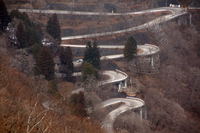 |
You leave the Irohazaka Road amazed; your right brain is arguing with your left brain as to what it means and whether to try it again. You leave your two brains arguing, and drive to Lake Chuzenji and on to Kegon Falls. This towering waterfall is impress- ive, but as often, you are tempted to watch the watchers watching. As you begin to relax into the surroundings, however, exquisite little details of the Japanese country- side begin to vibrate and hum: the color and fine chiseling of a rockface; a pink sprinkling of powdered sugar dogwood across the flinty hillside; the sherbet-y blush of azaleas all around you. Everything in Japan seems so much more, well, Japanese.
From Kegon Falls you motor into the town of Nikko, arriving at the shrines in time for a contest of archery on horseback, the contestants and retainers dressed in old-style armor and costume. The nearly irresistible aroma of grilling squid--charcoal-carbon-seafood-sweet--perfumes the air, and you go off in search of the perfect lunch--and find it.
The Masudaya Ryokan serves a set meal of perhaps a dozen small courses, all variously made from yuba, the skin that forms as bean curd is made, which is a specialty of the area. The dishes served are as different as they are delicious, and you are surprised not only by this, but by the exquisite subtleties of bits of fish, edible leaves and flowers, and sauces that are a part of this cuisine. A small whole pan-broiled trout accompanies the many small dishes, iridescent blue gleaming through flecks of lightly browned salt. The whole performance is a revelation, and the only decision to make is how many beers to order.
Your goal for Saturday night is the onsen (hot spring resort) of Shiobara, and you begin motoring north. Soon, you are driving on the Nichien Road, a tollway, and a very special road. (The search for the perfect wave is widely understood in our culture, why not the perfect road? Come to that, why not base tolls on driving pleasure?) The Nichien Road takes you almost to Shiobara. It is the way of ethereal driving--not too much traffic, every kind of corner imaginable, great surface, and gorgeous scenery. You look forward to tackling it again in the morning.
You pull into the forecourt of the ryokan (Japanese-style inn) and a wizened man trots out to give effusive welcome--but then becomes alarmed--the car is misaligned with the parking stripes, and the harmony of nature itself may be at risk. He has you re-park, guiding you with great solemnity exactly as he might bring a 747 in to its jetway. The Japanese are a precise people.
After dinner, you cross a footbridge over the adjacent river in your yukata (cotton kimono), and bathe in the rotenburo (outdoor bath fed by the hot springs). A clench of Japanese businessmen suffers some schoolboy nervousness at the unac- customed mixing of foreigners and sexes all at once, but it settles into simple cordiality at last. After a frenzied mixing of yukatas and slippers, everyone re-crosses the river and goes for a brief stroll along the main street before retiring. From the exigencies of business travel you have learned to sleep fast, but this night, relaxed and diverted, with the sound of the river playing in the background, you get an industrial strength sleep at last.
After a full Japanese breakfast, you resume your relationship with the Nichien Road on the way to the festival at Nikko. Unfortunately, some additional few devout, in both cars and buses, are also using your road today. As you come to a favorite section, a clot of four or five cars and a bus forms. Taking advantage of two long, looping curves, you slide by the cars and drift into the daylight just ahead of the bus, on your way into a proper right-hander, just the way you remember Surtees doing at the last corner onto the start-straight at the Glen. Your companion exclaims at the skill and brio with which you execute this maneuver, and you go on to luxuriate in the hard-won stretch of open road before you. A fantasist has a field day on this road, as the bikers are dis- covering. This road leaves that other road sitting in the road.
On the Nichien Road there are moments you wish the Aerodeck could somehow get a bit more horsepressure to the road quicker, a function of automatic gearbox rather than engine. Likewise, you wish it didn't plow quite so much, but you find that if you really get your foot in it, the front end comes around eventually, and the back end is never far behind. All in all, you have a fine drive.
The road into Nikko is bordered by huge, ancient cryptomeria, or cedars, and parallels the pathway taken by samurai once upon a time. Today, however, the traffic is horrendous, aggravated by hundreds of motorcyclists who zap around on all sides, relying on power more than skill. Finally a serious prang occurs, which you hear first: a café racer, passing fast between cars and curb, clips a bit of street furniture, gets sideways into a pole, and crashes heavily. Both rider and bike are badly nerkled, a gloomy intrusion in the bright sunshine of festival day.
The festival itself is all about crowds, costumery, pomp, and the grand procession of a thousand marchers wearing the regalia of the Tokugawa period. Portable shrines are ferried along, each requiring about two dozen bearers. Whisps of grilling squids, sandalwood incense, and yakitori intermingle in waves, with the tinkling of little bells, and the pulsing of mammoth drums, and the sound you hear all over Japan, the sloughing shuffle of slippers and sandals, as well as the noises and smells of horses and hundreds of children and of warm crowds anywhere. You eat the food sold at the festival itself, and drink sake sold in clear glass screw-top jars, or ice-cold Kirin. You are commemorating the death of Tokugawa Ieyasu in 1616.
After gassing up, you head for the Tohoku and Tokyo. You arrive at the final toll booth (tolls for the weekend are just over $36) as it is getting dark, and the darkness, makes a big difference in getting around by car, especially in the complexities of Tokyo. At the edges of Tokyo, there isn't sufficient signage in Romaji (Japanese transliterated into English letters) to tell where you are or make use of your maps, and the darkness makes this worse than otherwise. You come to a snarl of roads, and confront three choices in Kanji, with or without route numbers, and it seems a crap shoot. Driving sometimes on course, sometimes off, you discover that the outer sprawl of Tokyo has all the compactness and convenience of Los Angeles and all the charm of northeastern New Jersey. It is now well into your dinner hour, you are tired, hungry, and exasperated, possibly even a little panicky. But you pass up the Kentucky Fried Chicken, and even two scoops of banana-alligator, the featured flavor at Baskin Robbins. By God, you are holding out, and you plan to prevail. You are, of course, headed in the wrong direction.
At last, you are graced with an insight, and it has a lot to do with what it's really like to drive in Japan. When you drive in Japan, you wrestle with an unacknowledged fear, submerged just below consciousness, "my God, what if I get lost somewhere?" This is the wrong question. The real question is, "what will I do when I get lost?" The same thing you do when you're looking for Joe Bob's Barbecue in El Paso, when you've never before been to Texas and you don't speak the language. You use the map and other people, getting closer all the time, until, sooner or later, you're there. Without any languages in common, this works well enough with taxi drivers and at gas stations in Japan, it just takes longer. You need a good map, a pencil, and enough Romanji to name an easy checkpoint or your final destination.
After driving for some time in ever-narrowing circles (and a little apprehensive about the theoretical consequences), you find your hotel and lock up the car. By 9:30, you are eating a fine and relatively inexpensive dinner of Korean barbecue and kimchi, washed down with a couple of Sapporo drafts, and so to bed.
The following day, flushed with automotive achievements, you retrieve the trusty Aerodeck and hit the roads, headed this time for Hakone with its famous onsen hot springs and outdoor sculpture park. . . . But that, gentle reader, is a story for another day.
So what is driving in Japan really like? Hell, you put the key in and turn it, put the car in gear, and go.
Well, almost. You still occasionally signal turns with the windshield wipers. But you're very glad indeed that you went driving in Japan. ___________________________
If you decide to go, here's what I needed for driving in Japan, when I did this, long ago, what I needed to take or buy or obtain:
-An international driver's license, easy to get at home, unless you have either a need to have your character built or a continuing need for a Japanese driver's license.
-The best maps you can find for the area you plan to drive in. You can get maps at any good English-language bookstore in Tokyo. A map with both Romaji (what you read) and Kanji (what they read) might be especially helpful, if you can find such a thing.
-A nice mechanical pencil, which would be a useful tool for pointing. Maybe a penlight for night-time map-reading.
-Plenty of cash, i.e. Yen. They didn’t then take credit cards as many places as you're led to believe, and if they did, it would be every kind but the ones you have. You'll especially need cash if you like to go to interesting, out-of-way, off-the-tourist-track, authentic places, which is what you should do, otherwise why bother?
-Credit cards. Every so often, you may get to use one, so why not? This will facilitate getting rid of your unwanted money through megapurchases. And if you don't get off the beaten track, you will both need and be able to use your credit cards.
-A business card for each person you plan to talk to about anything that is, or seems, serious. It probably doesn't matter a whole lot what the card says or if its just nicely printed out on your printer.
-A small jar of instant coffee bought in America. If you need a cup or two to be civil or cogent in the morning, you're an addict. Why spend more than you have to, to support your habit? A cup of coffee will run you quite a bit per copy, but hot water is available free, everywhere in Japan.
-It's a good idea to be clear about two things: ideas the Japanese have about bathing, which are all good ideas, and ideas the Japanese have about when to wear shoes, or slippers, or stocking feet, which are OK ideas, but hard to relate to or remember. You can read up on this in any guidebook.
-You should feel free to eat anything sensible and you can drink the water anywhere, which is more than you can say about America any more. And there was no tipping in Japan. All of this is good news, no?
© Bill Sharfman, all rights reserved


